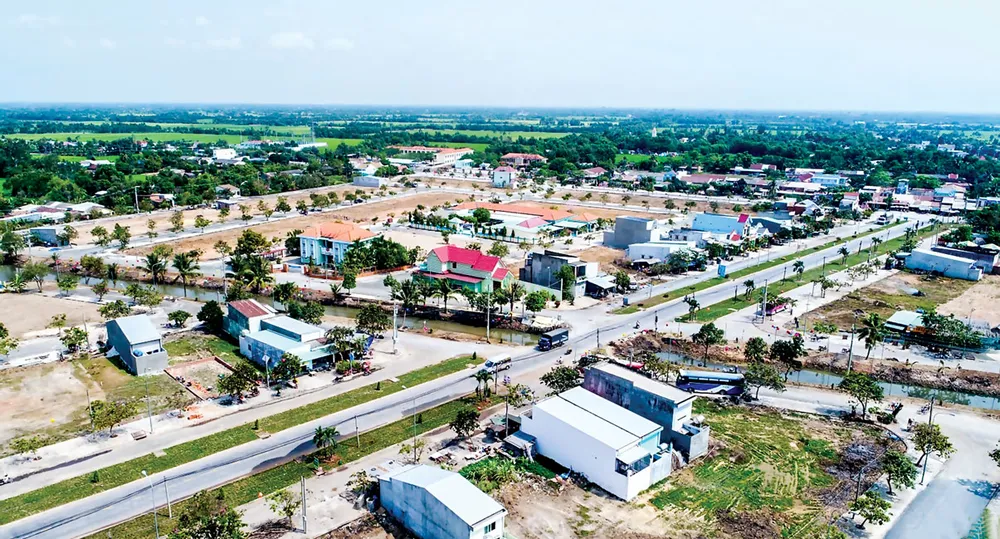
This massive project to link Ben Thanh Market to Tham Luong Depot in District 12 requires a firm commitment and determination and is expected to bring in great benefits for the northwest suburban border areas of Ho Chi Minh City.
Speeding up Metro project
The Metro Line No. 2 project will cover the length of about 11 kms and will be built at a total cost of VND 47,890 bn. This metro route will cross six districts of Ho Chi Minh City, namely, Districts 1, 3, 10, 12, Tan Binh and Tan Phu. The project requires the resettlement of 602 households that fall in its path, relocating technical infrastructure of 28 units such as those for water supply, cutting of some trees, and moving of a few lighting and telecommunication facilities.
The total land area covered under the project is 251,136 sq. m. and must all be cleared for the project to commence. Of the 602 households coming under land clearance in the metro project, 111 cases have received compensation money, and 55 cases have handed over the ground rights for construction.
Currently, the People's Committees of all the districts coming under the Metro Line No. 2 project have approved adjustment for the project and for compensation and resettlement support as well. It is expected that by June 2020, the whole ground area required for the entire Metro Line No. 2 project will be handed over to the Management Authority for Urban Railways (MAUR).
MAUR is already preparing to bid for consultancy and construction works in 2020, and will award contracts for the project. According to MAUR, Ho Chi Minh City will soon approve the land price adjustment coefficient as a basis for districts to promulgate decisions on land acquisition, approve policies, compensation packages, support and resettlement issues before start of the project.
To begin, Tan Binh station has a clear ground to prepare for commencement of the project, such as an operating workplace or a resettlement area for people. According to MAUR, the Metro Line No. 2 project will operate with ten trains having three cars with capacity to carry 170,000 passengers a day. Within the next ten years, the route will have fourteen trains and six cars to meet the demand of upto 480,000 passengers a day.
Mr. Cao Thanh Binh, Deputy Head of the Budget Board of the City People's Council, said that the urban board of the City Council will summarize the findings of a recent survey of Metro Line No. 1 and No. 2, and list all difficulties, problems and hand over recommendations of MAUR to the Standing Committee of the City People's Council for consideration in order to accelerate the implementation of the projects.
In the survey, the mission of the urban board of City Council recognized the efforts, urgency and high sense of responsibility of MAUR in recent years. This is also expected of the people of Ho Chi Minh City, because the completion of this project will contribute to traffic coordination, reduce traffic pressure and also develop a means for an efficient public transport system within Ho Chi Minh City and surrounding areas.
Connecting northwest region
The Metro Line No. 2 project will provide the foundation for the Northwest border areas to develop and benefit greatly in the future. Recently, the People's Committee of Ho Chi Minh City assigned the Department of Planning & Architecture to adjust the planning of this region.
-Dr. Nguyen Minh Hoa, urban expert
Mr. Nguyen Vu Bao Hoang, General Director of Thu Duc Housing Development Joint Stock Company, said that the biggest bottleneck that did not allow this northwest region of the city to develop much was because of an inadequate transport infrastructure and a lack of a synchronous investment plan in connecting this area with inner city districts and nearby localities.
When the city center is linked with areas such as Cu Chi and Hoc Mon, many large-scale projects will move in as there is abundant land in these regions. The Metro Line No. 2 project will provide the necessary boost to connect the Northwest region with the central parts of the city in the future.
Dr. Nguyen Minh Hoa, an expert in urban development, commented that according to the new plan adjustment, priority is being given to high-rise buildings for new residential areas along the main traffic axis such as along Highway 22 route and the Metro Line 2 route which passes from Ben Thanh Market to Tham Luong Depot in District 12 to Cu Chi District. Thus, if the Metro Line 2 project is extended to Cu Chi the infrastructure will simultaneously bring development to a larger area.
Ho Chi Minh City is bordered in the northwest by Binh Duong Province, a fast growing and dynamic suburb. The potential of this northwest area has been ignored for many years. While Cu Chi District can connect with rest of Southeast Asia via the Moc Bai International Border Gate in Tay Ninh Province.
If Ho Chi Minh City is thinking of creating Metro Line 1 and 2 then new and more modern centers can be added to the existing plan by about 20km to 30km, which will enhance the city landscape greatly. Recently, many big investors have turned their attention to the Cu Chi region but have not yet dared to invest there, hence Ho Chi Minh City is in need of a new and bolder approach in spatial planning.




















